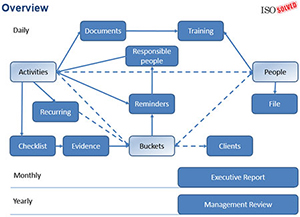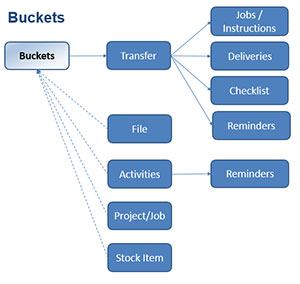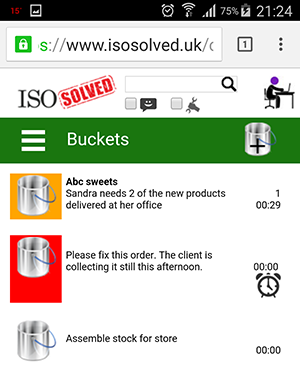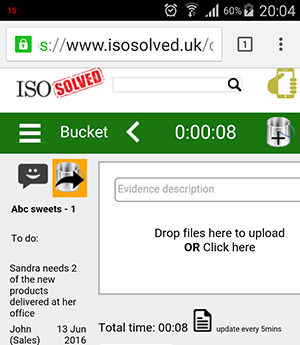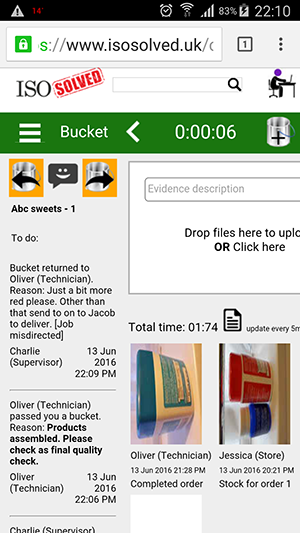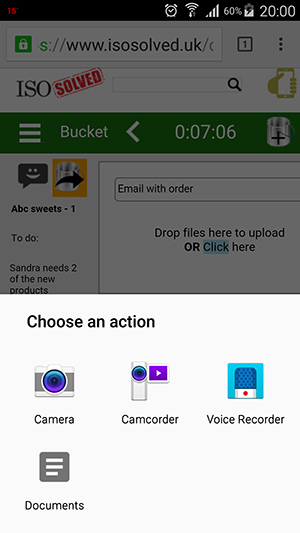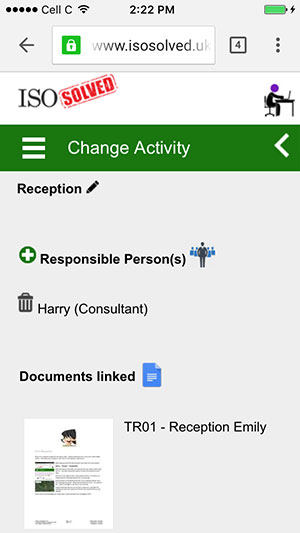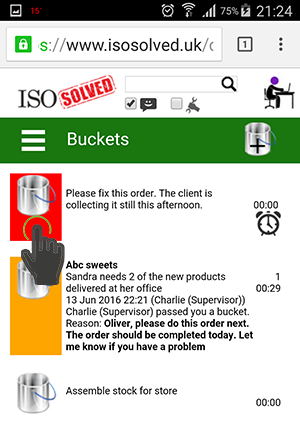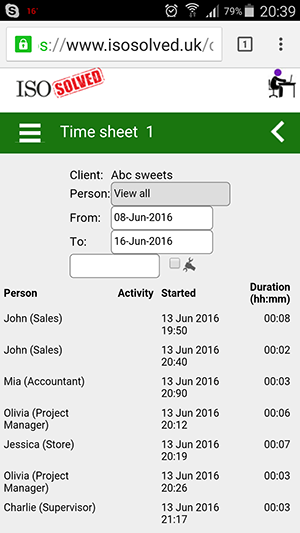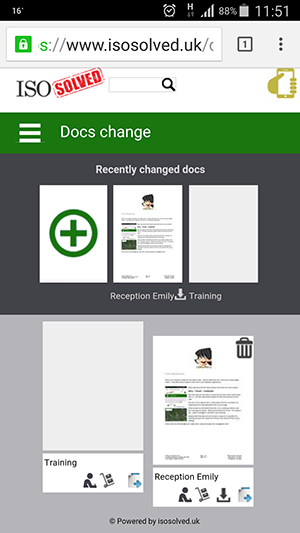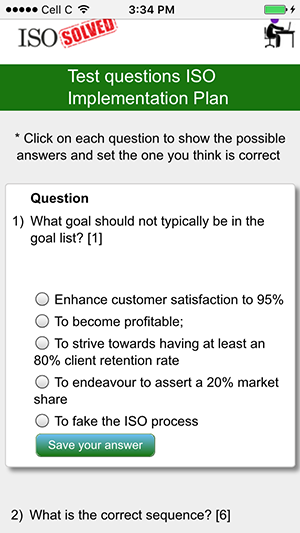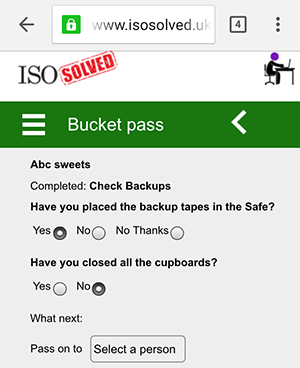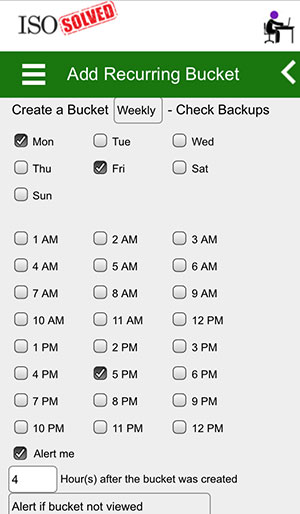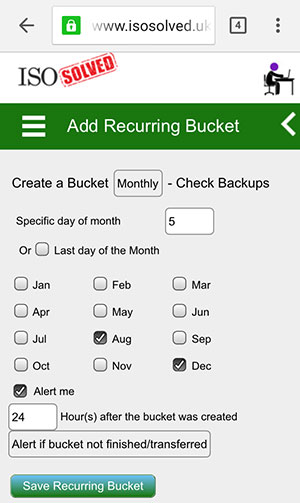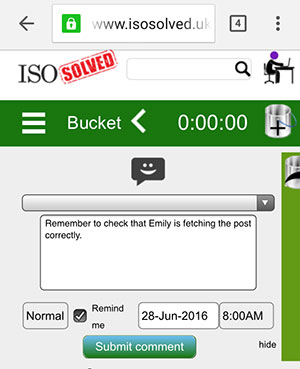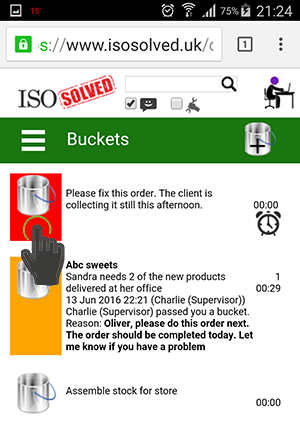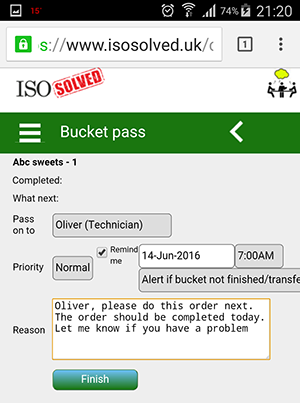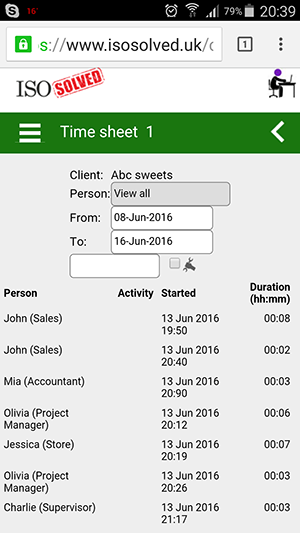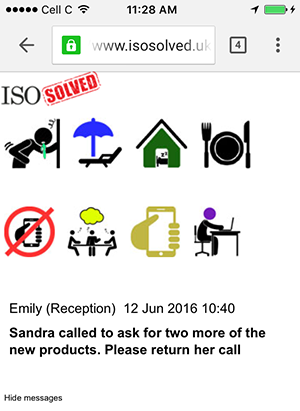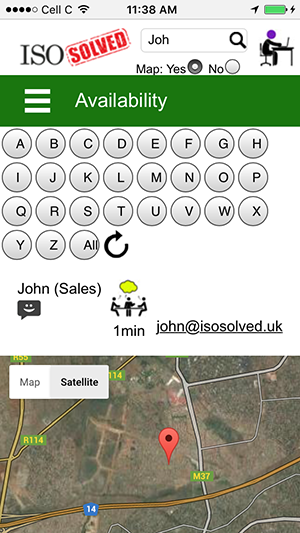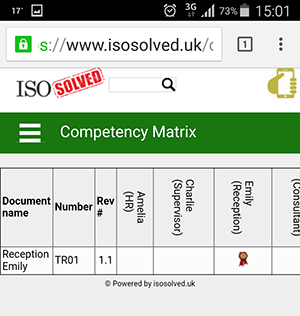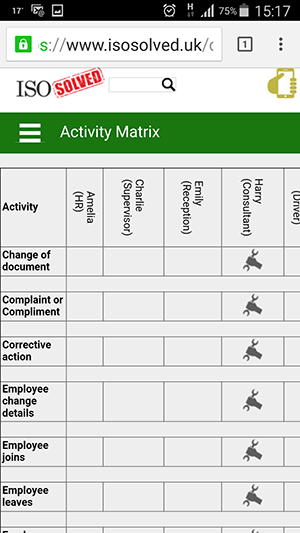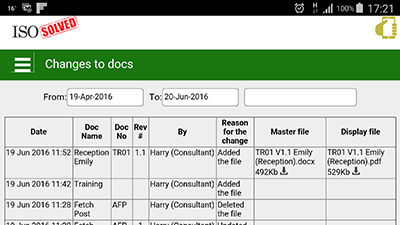Article
Overview of the SystemISO Solved is at the forefront of innovation with reference to the way businesses are organised. Experience the ISO Solved way to confirm what others have already successfully attained… a new paradigm in business management…and it is remarkably simple. Most companies, at one time or another during an average business day, face some common challenges. ISO Solved has resolved these challenges in such a way that it induced:
The monthly reportBefore we explain how the system works have a look at the monthly report the consultant sends to the client every month: https://www.isosolved.uk/ISO Solved Monthly Client Review Report v5c.pdf
Let’s start on the journey to enhance your business! Click on the image to view a bigger one. The Buckets are key to the communication between the various blocks and the rest of the functions are supporting the business process.
Handover of tasks/projects from one employee to another.A typical business uses different tools to keep track of and execute a client order. This process may vary from a hand written paper order form to a fully automated ERP system with various people able to access the different stages of projects. A common concern lies in how one employee is passing tasks on to another employee. This comprises the basis of employee interaction in any business. The bucket system is designed to define the interaction where a task or a portion of a project is passed between employees.
This is how the bucket list looks like:
When you click on a bucket the following page will great you.
The work is usually placed in a bucket that includes all the related information relevant to the task or project and assigned or moved to the next person. This means that each employee may add more substance to the bucket as he/she is working on tasks/portions of a project relevant to each employee’s skills. Various employees may contribute various material to portions of a project within a bucket. These additions are called “Activities”. For ease of use, the forward and backward arrow are used to pass the bucket forward or backwards. The time spent working on activities in a bucket is logged per employee.
A bucket can manage electronic files of any nature. Once you upload the file to the bucket; it remains there and may be used or accessed by other employees required to work with the file. If you are using a mobile phone or tablet rather than a stationary pc, adding evidence allows you to choose between:
What is each employee doing? ActivitiesAs a manager, it is nearly impossible to be constantly informed on what each employee is doing compared to what the employee is supposed or allowed to be doing. The ISO Solved solution defines the activities performed by each employee. An example or a list of activities in a typical HR department could include:
Some people might call this Job Descriptions but it is more specific on things they can do and linked to training and competency.
Which employee is working on what at the moment? SupervisorManagers need to be constantly updated on who is working on which tasks or projects. A supervisor may be put on the spot to explain where every employee is engaged at a specific time. This could be quite an undertaking. The ISO Solved solution assists the manager in knowing which employee is working on what at a specific time by simply accessing a report.
In most businesses, the supervisor is responsible for the allocation of employees to tasks or projects. In essense, the supervisor determines the schedule of tasks/projects to be done and by whom. The manager should receive and then set the probable timeframes for tasks/projects from the supervisor. This means that ultimately, the responsibility for the tasks/projects to be done and completed at a specific time as well as corrective measures when things don’t go according to plan, lies with the supervisor. On the list/timeline of buckets for each employee, the supervisor and the employee use a simple drag and drop action to arrange the sequence of buckets the employee will be working on. This allows the employee to move from one bucket to the next without any uncertainty. Each bucket displays the importance of the bucket’s tasks/projects. The employee thus knows how to plan and prioritise tasks. All in all, tasks/projects may be routed through a complex sequence of employees and activities without anybody having to manage an intricate and time consuming communication effort.
The manager can view the time sheet of a bucket.
Why is the champion’s work better? Document itThe champion of an activity would know how best to perform an activity.
Employees need to do more work: TrainingThere are various ways to get employees to do more:
If the manager or supervisor listens if employees inform them of obstacles and frustrations, it can easily be remedied. In order to define the work properly, it needs to be documented. How tasks/projects should be done can be monitored by managing the sequence of buckets. Training takes care of the rest. By setting up the documents in such a way that the documented activities are also used as the training manual, you can use the documented process for training. It is clear that the result of using the ISO Solved solution in various ways are improving efficiency and productivity. So, employees can do more in the same amount of time!
How can I ensure my employees are competent to perform the tasks/projects? Tests Compile a test on a work instruction document are using and instruct them to write the exam on their mobile. The test is scored automatically.
Quality of work: Use of questionsAs soon as an employee is pressured into working faster or harder, all sorts of things go wrong. Ensure they remember to do those things that can easily be forgotten or cause a problem. The ISO Solved solution asks the employee these questions before a bucket is passed on. You may even specify an alert if the employee answers incorrectly. For example.
You don’t have to wait for the employee to notify you and you may take action quicker.
How do I ensure the regular tasks are happening? Recurring bucketsSome tasks need to be done, daily, weekly or monthly and the manager needs to remember to give the instruction to the employees. With the recurring buckets, you may specify when a bucket needs to be assigned to the employee and add an alert if the tasks are not finished after for e.g. 4 hours. If they complete the task/project on time, you don’t get notified. It means that you manage the exceptions and not the norm. This feature is saving ISO Certified companies allot of headaches. Daily recurring buckets:
Weekly recurring buckets:
Monthly recurring buckets:
How can I remind myself to give attention to a bucket? Add a reminderYou can move the bucket up or down on the bucket list (changing the sequence). It may, however be necessary sometimes to set a reminder for yourself.
or you can use the sequence of buckets (drag the bucket up or down) to remind you what bucket you need to work on next:
How will I know if the employee has not opened a bucket or not finished the work after a couple of hours? Bucket reminderWhen passing the bucket on, tick the “Remind Me” tick box and select if you want to be reminded after for e.g. 2 hours if the employee did not view the bucket or haven’t finished the tasks/projects.
How long did we spend on that job? Time sheetsIt is difficult to remember the exact time spent on a project or activities.
Why is that phone ringing at an empty desk? AvailabilityMore and more offices are open plan configuration and it may be very disturbing and anti-productive when a phone is ringing at an empty desk. With the ISO Solved solution, employees set their own status to indicate their availability and activity.
When a receptionist needs to transfer or manage a client, she has all the information required in order to deal with the client efficiently. Messages from clients are emailed to the required employee and can be viewed on his/her mobile when changing their availability status The client service is thus turned around from wasting time to find the employee to being able to take and pass the message on effectively even if that person is in another part of the world.
What more do I need for ISO 9001:2015?Companies wanting to implement the ISO standards usually complain of excessive paperwork and manual processes hampering their operations. The above description showed how you can automate all of the paperwork needed with an enormous saving in effort, time and costs. The areas needed to complete the ISO 9001 certification are: Risk adjusted documents, Internal Audits and Management Reviews. The automation of specialist reports for management reviews are simplifying the compliance burden. We advise the use of one of our specially trained consultants to assist in preparing for your company’s certification. Step 1: Start using the system. View the competency Matrix, showing who was declared competent or not.
View the Activity Matrix thus showing who is performing what activity.
Record keeping of your company documents.
Total Solution: Keep it simpleThe ISO Solved solutions has the right software building blocks in place. The more advanced your business becomes, the more of the building blocks need to be in place. The different features are kept simple so that it is easy to use and the learning curve as low as possible. Every employee in a business has to be able to use the system in order to perform his or her tasks.
To view how the system is implemented in an manufacturing organisation Click here |
